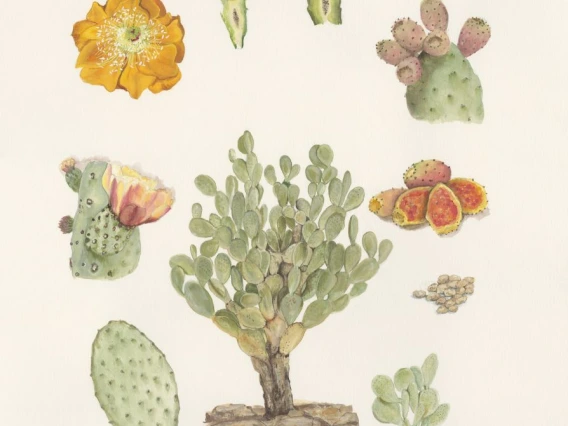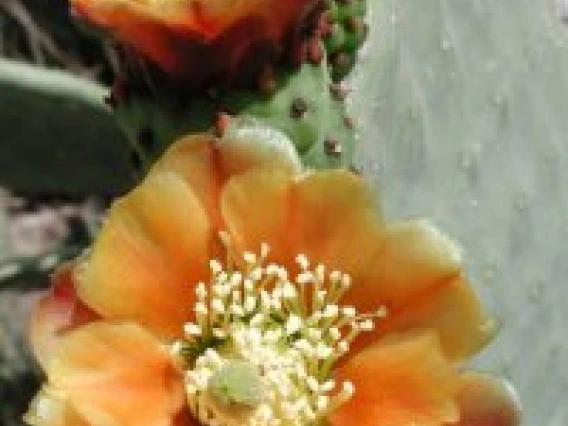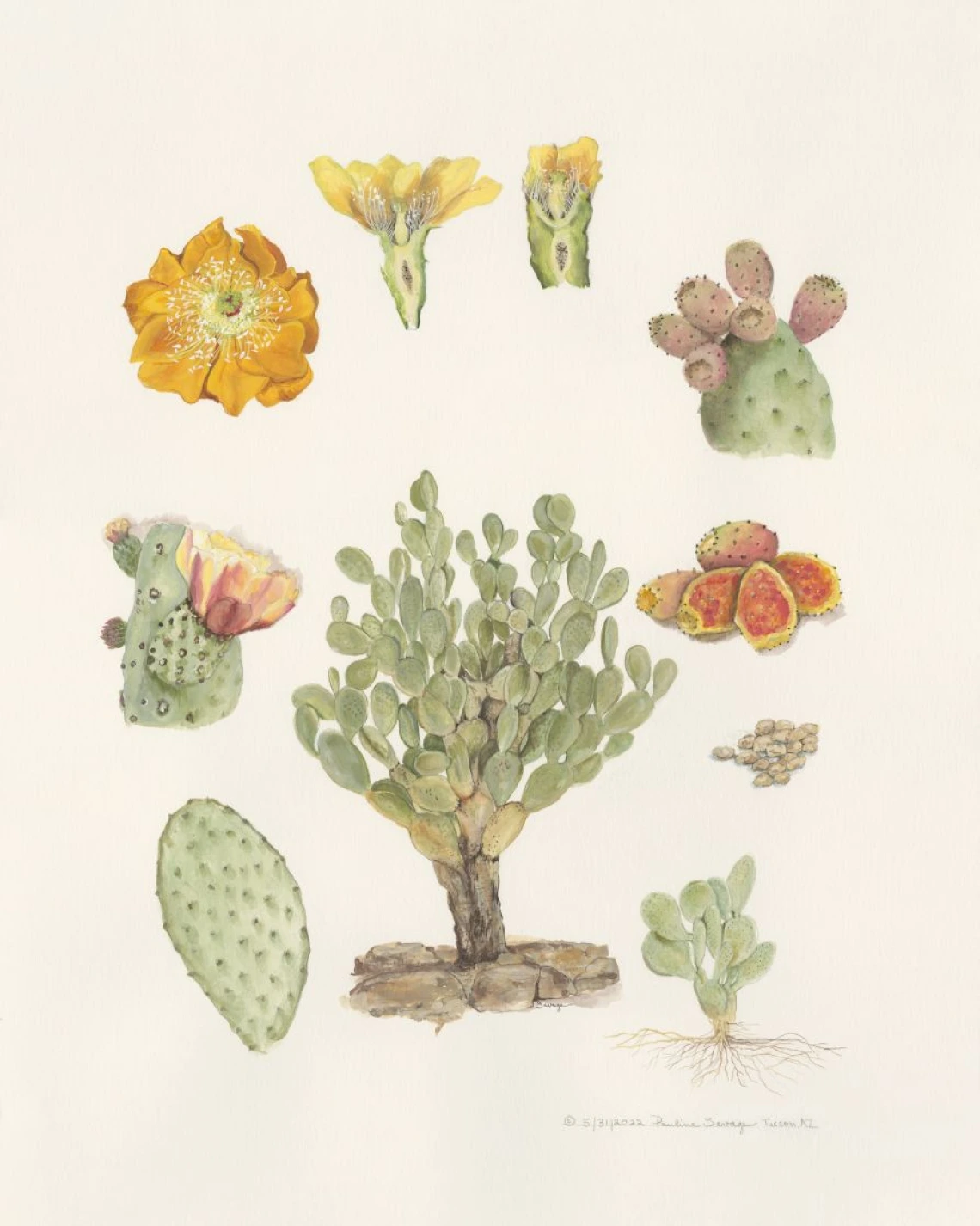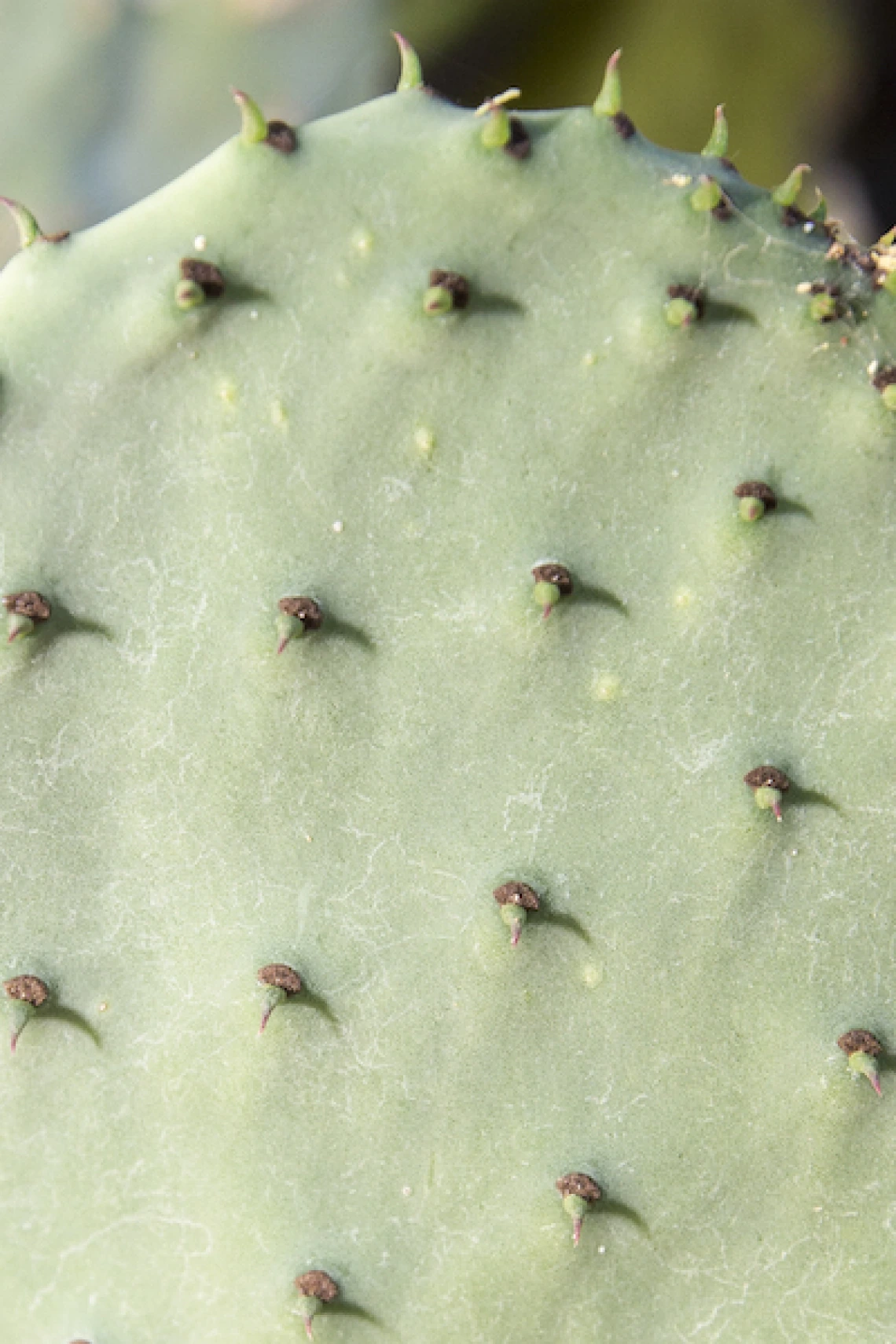Sonoran Native Plants Virtual Tour
Opuntia ficus-indica | Cactaceae | Indian fig
Desert Ecology:
Flowers and fruits vary in color from yellow to orange flowers, and reddish-purple or white-yellow fruits. Although, pollinated primarily by bees that specialize in cacti, they rely mostly on vegetative reproduction. The upright and spreading plant provides shelter and forage for wildlife.
Ethnobotany:
Natives cultivated this plant and it is still widely cultivated to this day all over the world. Opuntia are hosts for cochineal, from which a prized red dye can be extracted, and is commonly cultivated for this purpose. Originally brought to North America by missionaries from “New Spain”, its fruits, called “tunas,” can be eaten fresh or mashed into jam. The young pads, eaten as “nopalitos”, (spines removed) are known to lower blood serum cholesterol and blood sugar levels. The pads are often cooked and eaten with chiles, onions, tomatoes, garlic. The Indian Fig is the most prized of the prickly pear fruits for flavor. Pulp from the pads can be used as moisturizer, sun protectant, as a remedy for warts, kidney problems, and measles, as an anti- inflammatory medicine or to sooth tarantula bites and sores. It is also used in adobe construction: adhesive because of its water resistant properties.









